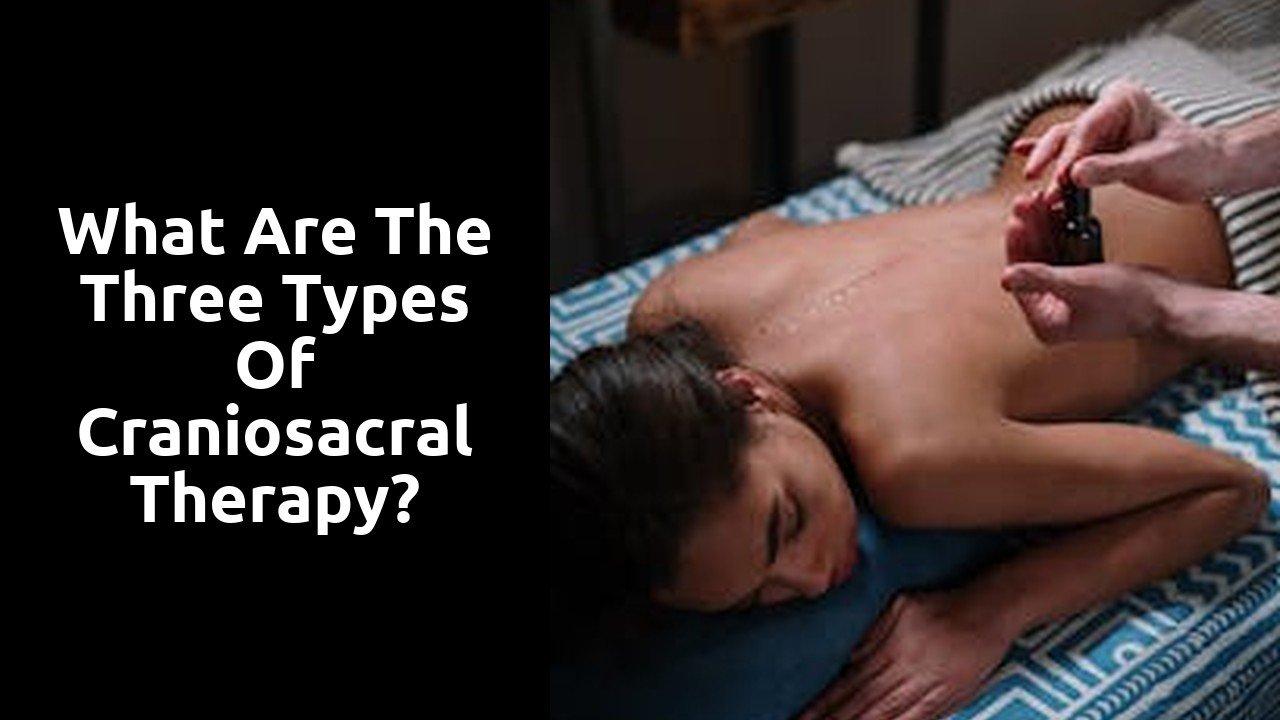Table Of Contents
Conditions Treated
Craniosacral Therapy is known to be beneficial for a range of conditions. It is commonly used to relieve headaches, migraines, and neck pain. Many individuals also turn to Craniosacral Therapy for stress and tension reduction, finding relief in its gentle yet effective approach to calming the nervous system.
Furthermore, Craniosacral Therapy has shown promise in improving symptoms of temporomandibular joint (TMJ) dysfunction, sinus issues, and sleep disorders. Some individuals seek out Craniosacral Therapy to support their overall well-being and promote relaxation, as it is believed to help balance the body’s natural rhythms and enhance the body’s ability to self-heal.
Chronic Pain Management
Individuals suffering from chronic pain may find relief through Craniosacral Therapy. This gentle hands-on technique aims to release tension and improve the flow of cerebrospinal fluid around the brain and spinal cord. By addressing imbalances in the craniosacral system, this therapy can potentially alleviate chronic pain conditions such as migraines, fibromyalgia, and neck or back pain.
Craniosacral Therapy can be integrated into a comprehensive treatment plan for chronic pain management. When used in conjunction with other therapies such as massage, acupuncture, or physical therapy, it can enhance overall well-being and promote the body’s natural healing processes. Many patients have reported positive outcomes when Craniosacral Therapy is combined with traditional medical treatments, showing promising results in managing chronic pain.
Integration with Other Therapies
Craniosacral Therapy is often used in conjunction with other complementary healing practices to enhance its effectiveness for various health conditions. When integrated with other therapies such as acupuncture, massage therapy, or chiropractic care, Craniosacral Therapy can provide a more holistic approach to healing. These integrative practices aim to address the body as a whole, considering physical, emotional, and energetic aspects to promote overall well-being.
The combination of Craniosacral Therapy with other healing modalities allows for a multidimensional approach to health and wellness. By incorporating techniques from different disciplines, practitioners can tailor treatment plans to address individual needs comprehensively. This collaborative approach can lead to improved outcomes for patients seeking relief from conditions such as chronic pain, stress, and anxiety.
Complementary Healing Practices
Craniosacral Therapy can also be used in conjunction with other complementary healing practices to enhance its effectiveness. Some practitioners may combine Craniosacral Therapy with techniques such as acupuncture, chiropractic adjustments, or Reiki healing to provide a more holistic approach to healing. These integrative practices aim to address not only physical ailments but also emotional and energetic imbalances, promoting overall well-being in clients seeking alternative forms of treatment.
Training and Certification
To become a certified practitioner in Craniosacral Therapy, individuals must complete specialized training programs that focus on the principles, techniques, and applications of this holistic therapy. These programs typically include both classroom instruction and hands-on practical experience to ensure practitioners are well-versed in the subtle manipulations and gentle touch required for effective therapy sessions. Additionally, aspiring practitioners are often required to log a certain number of supervised hours practicing Craniosacral Therapy before they can obtain certification, ensuring they have the necessary skills and expertise to work with clients safely and effectively.
Training and certification in Craniosacral Therapy emphasize the importance of understanding the body’s natural healing mechanisms and the interconnectedness of body, mind, and spirit. Practitioners are trained to assess clients’ craniosacral rhythms and energy flow, allowing them to identify areas of imbalance or blockages that may be contributing to physical or emotional discomfort. Through in-depth study and practical training, certified practitioners are equipped with the knowledge and skills needed to help clients restore balance, promote relaxation, and support their overall health and well-being through Craniosacral Therapy.
Becoming a Certified Practitioner
To become a certified practitioner in Craniosacral Therapy, individuals typically undergo specialized training programs to acquire the necessary skills and knowledge. These programs often involve in-depth coursework that covers the principles and techniques of Craniosacral Therapy, as well as hands-on practice to develop expertise in the field. Upon completion of the training program, aspiring practitioners may need to pass a certification exam to demonstrate their proficiency in Craniosacral Therapy.
Certification in Craniosacral Therapy not only validates a practitioner’s competency in the field but also enhances their credibility and trustworthiness among clients. By obtaining certification, practitioners can showcase their commitment to upholding professional standards and providing quality care to individuals seeking Craniosacral Therapy services. Additionally, certification may open up opportunities for practitioners to work in various healthcare settings, collaborate with other healthcare professionals, and expand their practice to reach a wider client base.
FAQS
What is craniosacral therapy?
Craniosacral therapy is a gentle, hands-on approach that focuses on the bones of the head, spinal column, and sacrum to release compression and improve the flow of cerebrospinal fluid.
What are the three types of craniosacral therapy?
The three types of craniosacral therapy are Biodynamic Craniosacral Therapy, Functional Craniosacral Therapy, and Mechanical Craniosacral Therapy.
How does Biodynamic Craniosacral Therapy differ from other types?
Biodynamic Craniosacral Therapy emphasizes the body’s inherent ability to heal itself and works with the body’s natural rhythms to facilitate the release of tension and trauma.
What conditions can be treated with craniosacral therapy?
Craniosacral therapy can be used to treat a variety of conditions such as chronic pain, migraines, TMJ disorders, stress, anxiety, and emotional trauma.
Is craniosacral therapy suitable for integration with other therapies?
Yes, craniosacral therapy can be integrated with other complementary healing practices such as acupuncture, massage therapy, and chiropractic care to enhance overall well-being and treatment outcomes.
Related Links
Craniosacral Therapy
Does craniosacral therapy really work?
What conditions does craniosacral therapy treat?
How often should you have craniosacral therapy?
What is another name for craniosacral therapy?
Is cranial sacral covered by insurance?
How many sessions of craniosacral therapy are there?
Is craniosacral therapy debunked?
How do I give myself craniosacral therapy?
Is there any evidence that craniosacral therapy works?
What conditions can craniosacral therapy help with?
Is craniosacral therapy FDA approved?
